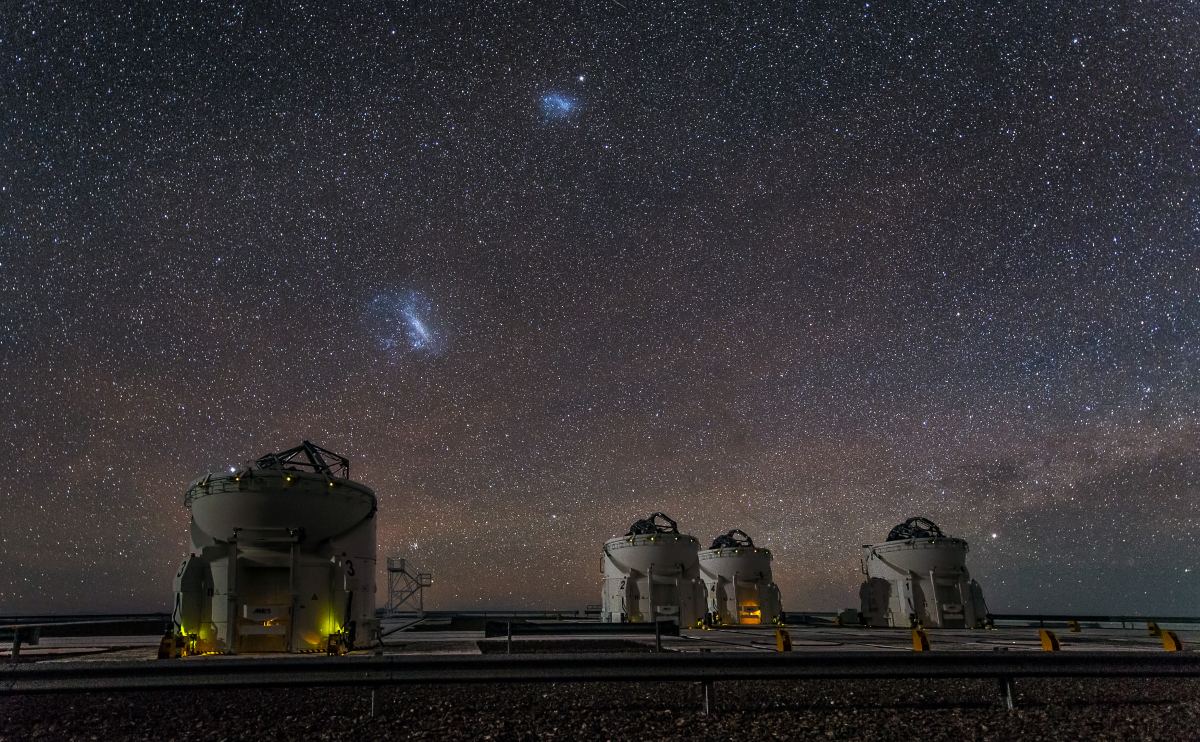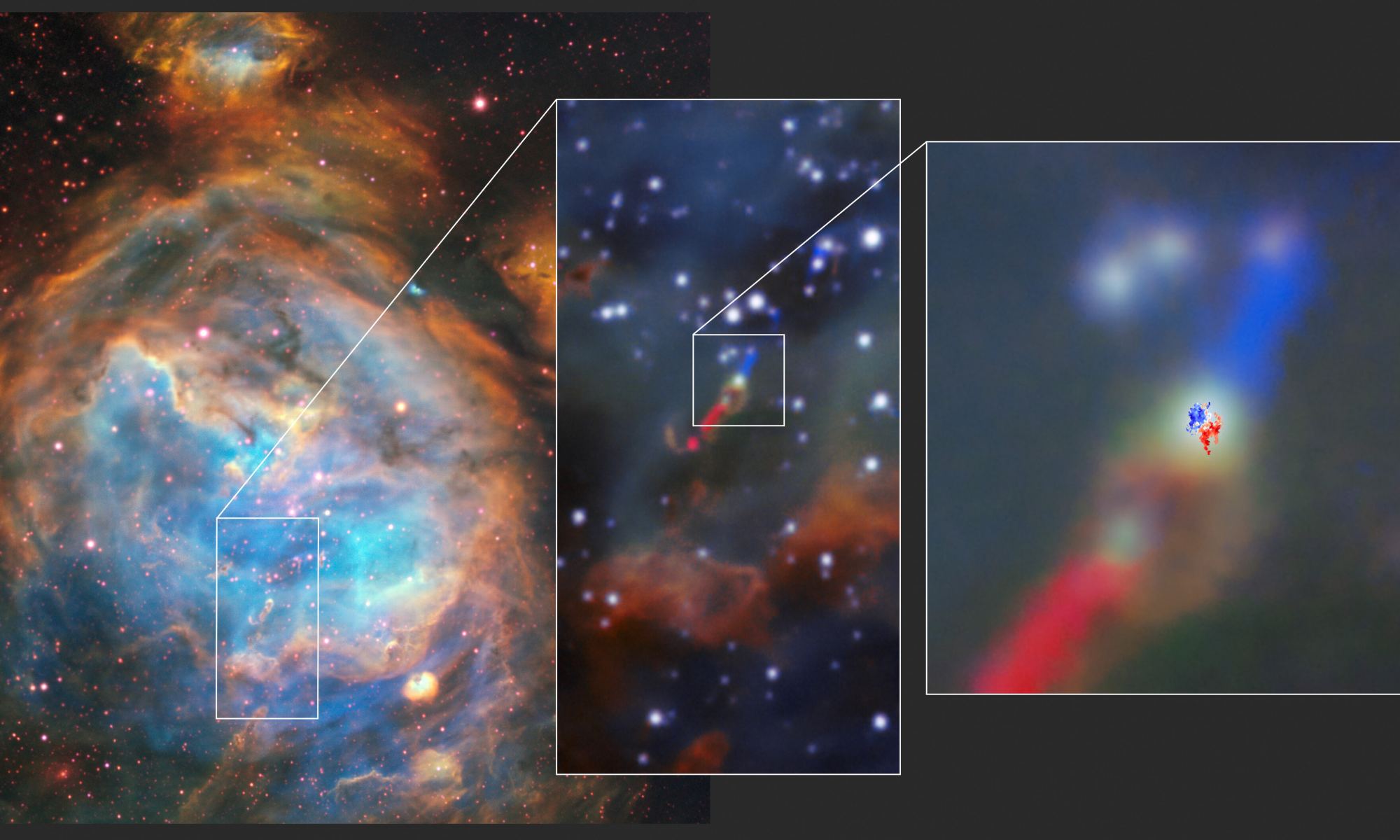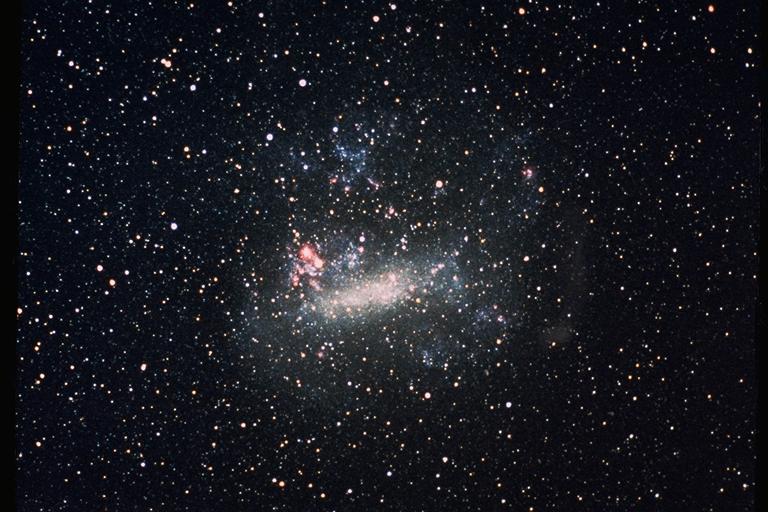The traditional theory of black hole formation seems to struggle to explain how black holes can merge into larger more massive black holes yet they have been seen with LIGO. It’s possible that they may have formed at the beginning of time and if so, then they may be a worthy candidate to explain dark matter but only if there are enough of them. A team of researchers recently searched for microlensing events from black holes in the Large Magellanic Cloud but didn’t find enough to account for more than a fraction of dark matter.
Continue reading “LIGO Has Detected Unusual Black Holes Merging, But they Probably Don’t Explain Dark Matter”We’re Living in an Abnormal Galaxy

Astronomers often use the Milky Way as a standard for studying how galaxies form and evolve. Since we’re inside it, astronomers can study it in detail with advanced telescopes. By examining it in different wavelengths, astronomers and astrophysicists can understand its stellar population, its gas dynamics, and its other characteristics in far more detail than distant galaxies.
However, new research that examines 101 of the Milky Way’s kin shows how it differs from them.
Continue reading “We’re Living in an Abnormal Galaxy”The First Close-Up Picture of Star Outside the Milky Way

Like a performer preparing for their big finale, a distant star is shedding its outer layers and preparing to explode as a supernova.
Astronomers have been observing the huge star, named WOH G64, since its discovery in the 1970s. It’s one of the largest known stars, and also one of the most luminous and massive red supergiants (RSGs). The star is surrounded by an envelope of expelled star-stuff, which could indicate it’s getting ready to explode.
Continue reading “The First Close-Up Picture of Star Outside the Milky Way”The Large Magellanic Cloud Survived its Closest Approach to the Milky Way

The Large Magellanic Cloud is a small galaxy, just a tenth of the Milky Way’s mass. It is about 160,000 light years away, which is remarkably close in cosmic terms. In the southern hemisphere it spans the width of 20 Moons in the night sky. While the galaxy seems timeless and unchanging to our short human lives, it is, in fact, a dynamic system undergoing a near collision with our galaxy. Now astronomers are beginning to observe that process.
Continue reading “The Large Magellanic Cloud Survived its Closest Approach to the Milky Way”Giant Cluster is Spitting Out Massive Stars

We live inside the Milky Way galaxy which is joined as it drifts through space by two satellite galaxies, the Magellanic Clouds. A star cluster in the Large Magellanic Cloud known as R136 has been the subject of a fascinating discovery. A team of astronomers have discovered 55 high-speed stars that have been ejected from the cluster. The discovery was made using the Gaia satellite and it seems up to a third of stars from the cluster have been ejected in the last century.
Continue reading “Giant Cluster is Spitting Out Massive Stars”Another Strike Against Primordial Black Holes as an Explanation for Dark Matter

The quest to understand dark matter has taken many twists and turns. It’s a scientific tale but also a human one. We know there’s a missing mass problem, but astrophysicists and cosmologists can’t figure out what the missing matter is. One of the most interesting potential solutions is primordial black holes (PBHs).
However, new research suggests that PBHs can only make up a small portion of dark matter if any at all.
Continue reading “Another Strike Against Primordial Black Holes as an Explanation for Dark Matter”Hundreds of Massive Stars Have Simply Disappeared

The lifecycle of a star is regularly articulated as formation taking place inside vast clouds of gas and dust and then ending either as a planetary nebula or supernova explosion. In the last 70 years however, there seems to be a number of massive stars that are just disappearing! According to stellar evolution models, they should be exploding as supernova but instead, they just seem to vanish. A team of researchers have studied the behaviour of star VFTS 243 – a main sequence star with a black hole companion – and now believe it, like the others, have just collapsed, imploding into a black hole!
Continue reading “Hundreds of Massive Stars Have Simply Disappeared”Does the Milky Way Have Too Many Satellite Galaxies?
The Large and Small Magellanic Clouds are well known satellite galaxies of the Milky Way but there are more. It is surrounded by at least 61 within 1.4 million light years (for context the Andromeda Galaxy is 2.5 million light years away) but there are likely to be more. A team of astronomers have been hunting for more companions using the Subaru telescope and so far, have searched just 3% of the sky. To everyone’s surprise they have found nine previously undiscovered satellite galaxies, far more than expected.
Continue reading “Does the Milky Way Have Too Many Satellite Galaxies?”The Large Magellanic Cloud isn’t Very Metal

The Large Magellanic Cloud (LMC) is the Milky Way’s most massive satellite galaxy. Because it’s so easily observed, astronomers have studied it intently. They’re interested in how star formation in the LMC might have been different than in the Milky Way.
A team of researchers zeroed in on the LMC’s most metal-deficient stars to find out how different.
Continue reading “The Large Magellanic Cloud isn’t Very Metal”A Protoplanetary Disc Has Been Found… in Another Galaxy!

Astronomers have imaged dozens of protoplanetary discs around Milky Way stars, seeing them at all stages of formation. Now, one of these discs has been found for the first time — excitingly — in another galaxy. The discovery was made using the Atacama Large Millimeter/Submillimeter Array (ALMA) in Chile along with the , which detected the telltale signature of a spinning disc around a massive star in the Large Magellanic Cloud, located 160,000 light-years away.
Continue reading “A Protoplanetary Disc Has Been Found… in Another Galaxy!”

